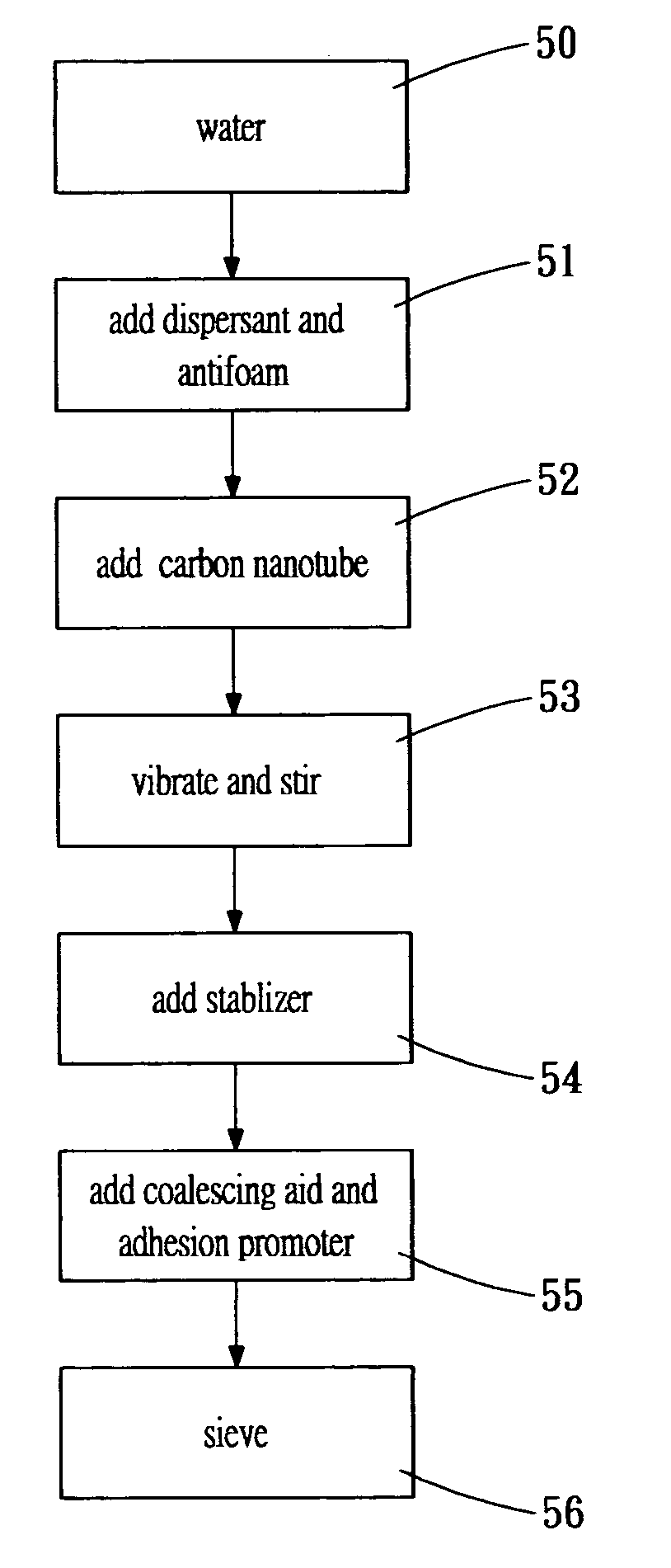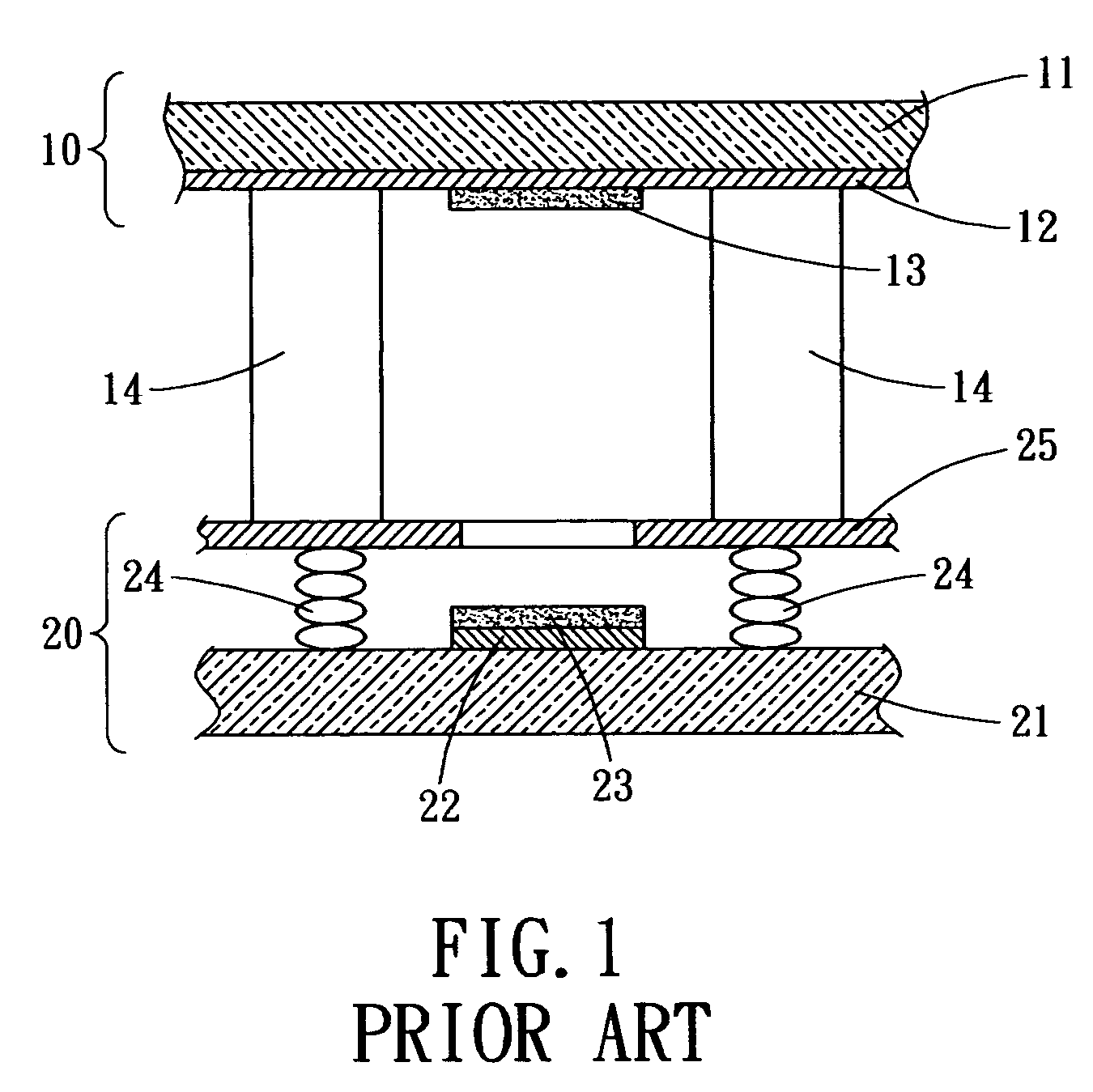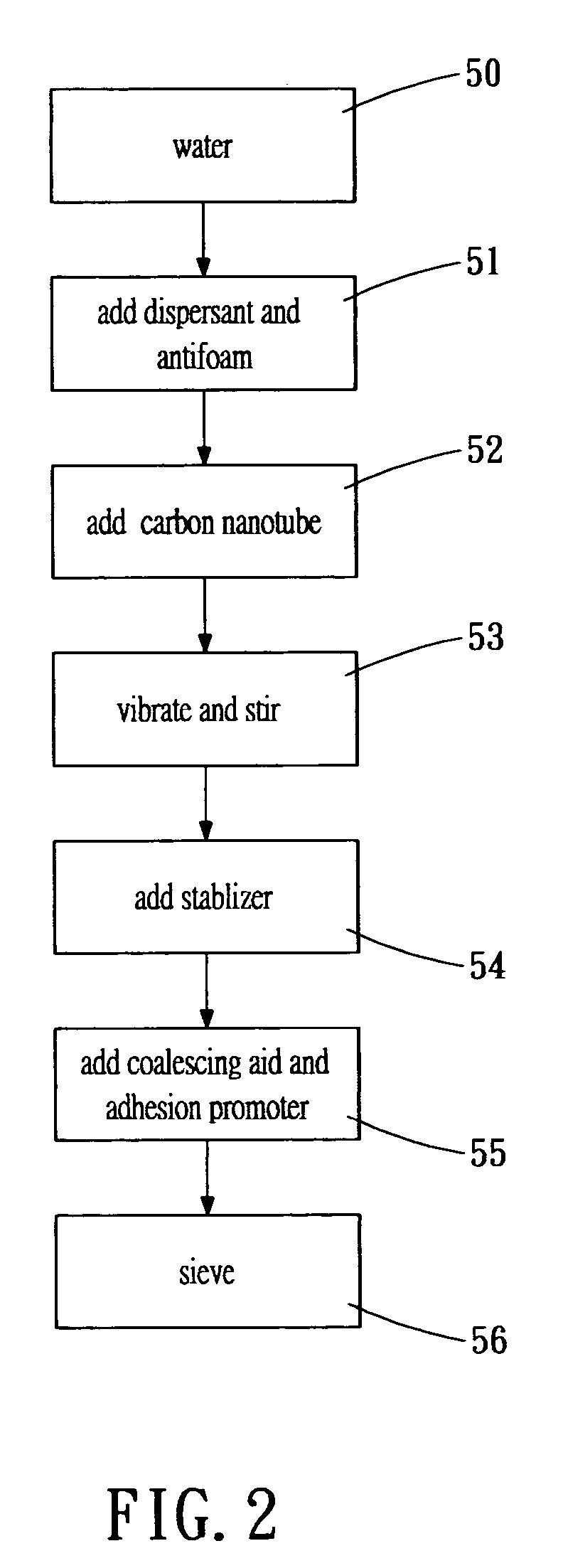Carbon nanotube suspension
a carbon nanotube and suspension technology, applied in the manufacture of electric discharge tubes/lamps, non-metal conductors, conductors, etc., can solve the problems of difficult distribution of high-viscosity carbon nanotube mixtures, difficult to obtain an even surface, and difficult to achieve uniform electric fields to generate electron beams. , to achieve the effect of easy formation
- Summary
- Abstract
- Description
- Claims
- Application Information
AI Technical Summary
Benefits of technology
Problems solved by technology
Method used
Image
Examples
Embodiment Construction
[0013] A carbon nanotube suspension is provided using water as the solvent, which is added with dispersant, stabilizer, coalescing aid, adhesion promoter and antifoam to form a low-viscosity solution. A carbon nanotube no longer than 1 micron is then immersed in the low-viscosity solution to form the carbon nanotube suspension. The proportion of the solutes and the nanotube is as follows: [0014] 1. carbon nanotube: 5% to 20%; [0015] 2. coalescing aid: 5% to 20%, including aluminum sodium sulfate, silane coupling agent, alkyd resin or tetra-ethyl-ortho-silicate (TEOS), or the combination of any of these components, such that the suspension can be easily attached to the glass substrate of the field-emission display; [0016] 3. adhesion promoter: 1% to 5%, including PVA, PVP, methyl cellulose, ethyl cellulose, sodium polyacrylate, or ammonium polyacrylate for increasing adhesion of the suspension, so as to control the film thickness. [0017] 4. stablizer: 0.5% to 5%, including one of amm...
PUM
| Property | Measurement | Unit |
|---|---|---|
| adhesion | aaaaa | aaaaa |
| of time | aaaaa | aaaaa |
| brightness | aaaaa | aaaaa |
Abstract
Description
Claims
Application Information
 Login to View More
Login to View More - R&D
- Intellectual Property
- Life Sciences
- Materials
- Tech Scout
- Unparalleled Data Quality
- Higher Quality Content
- 60% Fewer Hallucinations
Browse by: Latest US Patents, China's latest patents, Technical Efficacy Thesaurus, Application Domain, Technology Topic, Popular Technical Reports.
© 2025 PatSnap. All rights reserved.Legal|Privacy policy|Modern Slavery Act Transparency Statement|Sitemap|About US| Contact US: help@patsnap.com



